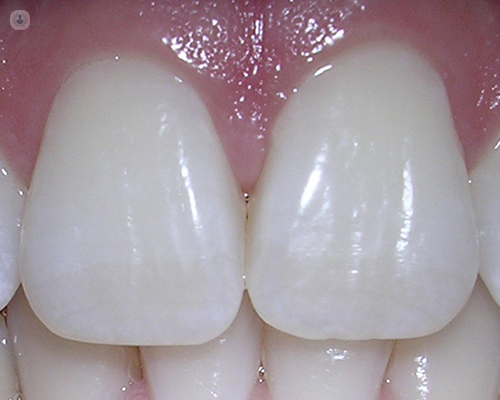Care of the gums, pending subject in the population
Written by:The gums are the fibromucosal tissues inside the mouth, which cover the dental alveoli and the necks of the teeth themselves. They are formed by connective tissue coated with keratinized epithelial tissue. It consists of keratinized gingiva proper (attached to the bone and in close proximity to the teeth) and alveolar mucosa (mobile and in continuity with the lips).
Gum Problems
We usually differentiate between two major problems, gingivitis and periodontitis.
Gingivitis consists simply of inflammation of the gums by the accumulation of bacterial plaque.
Periodontitis is the inflammation of the periodontium or the set of structures that hold the teeth to the jaws. Within the periodontitis different forms of severity are distinguished, the most serious being periodontitis, which is rapidly progressive and refractory to treatment. This usually starts at a young age, and can end the inexorable loss of teeth in a few years.
Periodontal disease is a chronic pathology that occurs in outbreaks with a minimally progressive symptomatology - sometimes totally asymptomatic - leading to a loss of periodontal support of the teeth, ie, the bone in which they are attached, periodontal ligament and the gums.

This problem is present in 60% of the population, although evidently with varying degree of affectation. It is considered as a risk factor for health and quality of life by the World Health Organization.
How should gums be taken care of?
Mainly, the care of the gums is personal and domiciliary, since its care depends on the oral hygiene. There are several ways to care for and protect the gums:
- Elimination of bacteria through personal hygiene: periodontal disease is caused by bacterial plaque, which is the potentially pathological association of bacteria in teeth and gums. Thus, oral hygiene is aimed at eliminating the plaque that is formed and is continuously deposited on the teeth.
- Bacterial elimination through personal external hygiene: there is an undoubted genetic predisposition to periodontitis, linked to some deficiencies of the immune system against these bacteria. For this reason, the particular hygienic measures aimed at eliminating the plaque are usually not enough and it requires the periodic competition of the dentist or the dental hygienist to correct the defects of personal oral hygiene by a treatment of variable periodicity, which will normally vary between Three and six months.
- Elimination of risk factors:
- Tobacco is one of the most known risk factors. A smoker will receive a worse response from treatments and an increased risk of worsening of the outcome.
- The consumption of drugs that produce dry mouth intensifies the propensity to suffer periodontal disease in a particularly severe. Thus, in addition to the control of bacterial plaque should keep the moisture in the mouth, breathing through the nose, trying to drink every little time and use saliva-producing medicines.
- Diabetes, obesity, certain medications and metabolic and dietary deficiencies negatively affect the disease.
- Stress and habits or lifestyles have a decisive influence on the development and control of the disease.
Gum problems: how to treat them
Once the disease is in active stages, it is necessary to go to a dental specialist to follow (if necessary) the following process:
- Remove irritants that retain plaque, such as overflows (fillings) of fillings and crowns that need to be corrected. In turn, it is necessary to polish all dental surfaces.
- Through a process of periodontal decontamination known as dental prophylaxis or tartrectomy, plaque and bacterial plaque deposits, also called tartar or tartar, are removed.
- Basic periodontal treatment: scaling and smoothing of the roots to reduce the tendency to accumulate plaque and calculus, and to favor the new insertion of gingiva reducing or eliminating the periodontal bags so that the patient can maintain with a good technique of brushing his mouth free of plaque. This periodontal treatment is complemented by minimally invasive techniques, such as the effect of LED light, called photodynamic therapy. This consists of a photoactivated disinfection that replaces the antibiotics (before the possible adverse effects and the acquired resistance of the same ones).
- If the measures mentioned above do not work, it will be necessary to perform some surgical corrections of defects (periodontal resective surgery) or tissue replacement (periodontal regenerative surgery) using bone grafts, enamel or gingiva proteins.
- Sometimes, the only possible treatment is the extraction of one or more teeth to prevent the spread of the disease or eliminate the symptomatology in very affected teeth.
- In addition, it is essential - in the margin of personal hygiene - to carry out periodic inspection and maintenance visits, consisting of cleaning and occasional scraping of the irregularities that the deposits cause on the root surfaces.



